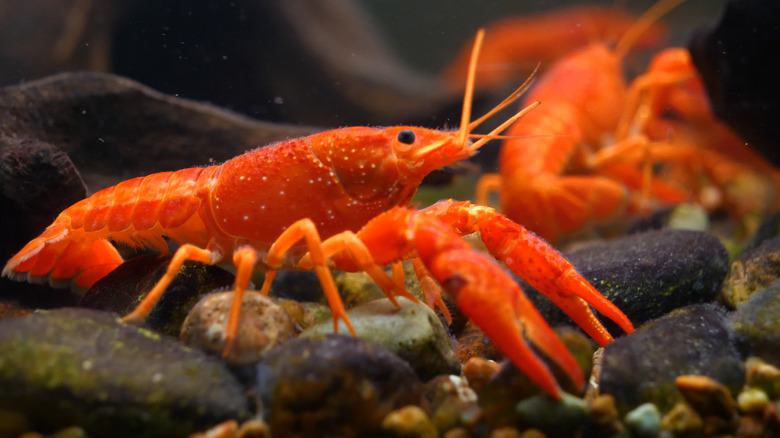What One New York Wegmans Did When It Found A Super-Rare Lobster
According to Niagara Frontier Publications, a rare yellow lobster once found its way into a shipment bound for a Wegman's store in Pittsford, New York. Luckily, the grocery store's seafood manager Mark Fromm recognized the curious crustacean and recalled that a year earlier, the Aquarium of Niagara adopted a yellow lobster that had ended up with a food services company in Rochester. Fromm reached out to the aquarium's executive director, who ultimately ended up with the second flaxen crustacean.
The Lobster Institute at the University of Maine says that the odds of catching a yellow lobster is one in 30 million. By contrast, the rare blue lobster's odds are one in two million. Surprisingly, the yellow lobster clocks in at number six on the Rarest's Top 8 list of rarest colors in the world. The number one honor goes to the white lobster at one in 100 million.
Atlantic lobsters tend to be a mottled brownish-green color, according to Maine Lobster Festival, which helps them blend into the sea floor and keeps them save from predators. Lobster Anywhere explains that lobsters with unique-colored shells are the product of a genetic mutation.
How lobsters get their hue
The plant matter lobsters eat contains a red pigment, an antioxidant called astanxanthin, explains the Smithsonian Institute. The pigment eventually makes its way into the shell, where it binds with proteins and changes its color. The lobster shell's color is actually layered pigments of red, orange, and blue, which blended together gives it a deep sea camouflage.
Lobsters that have a mutation in their protein affects the way astanxanthin binds, which changes the crustacean's color (via Lobster Anywhere). As Lobsters.org explains, unusually-hued lobsters are born that way and most will remain that way until cooked. Britannica explains that the proteins bound to the astanxanthin can't take the heat under cooking. After the proteins fall away, only the antioxidant is left in lobster's shell, which gives it the bright red color. IFLScience says the genetic condition in yellow lobsters is called leucism, which is a partial loss of pigment that makes them yellow (Some lobsters with leucism are nearly translucent). IFLScience also notes that lobsters with leucism don't turn red when cooked.
As for the lucky upstate New York aquarium, Niagara Frontier Publications says executive director Nancy A. Chapin was excited for the smaller yellow lobster to join its older cousin as part of their regular exhibits.

